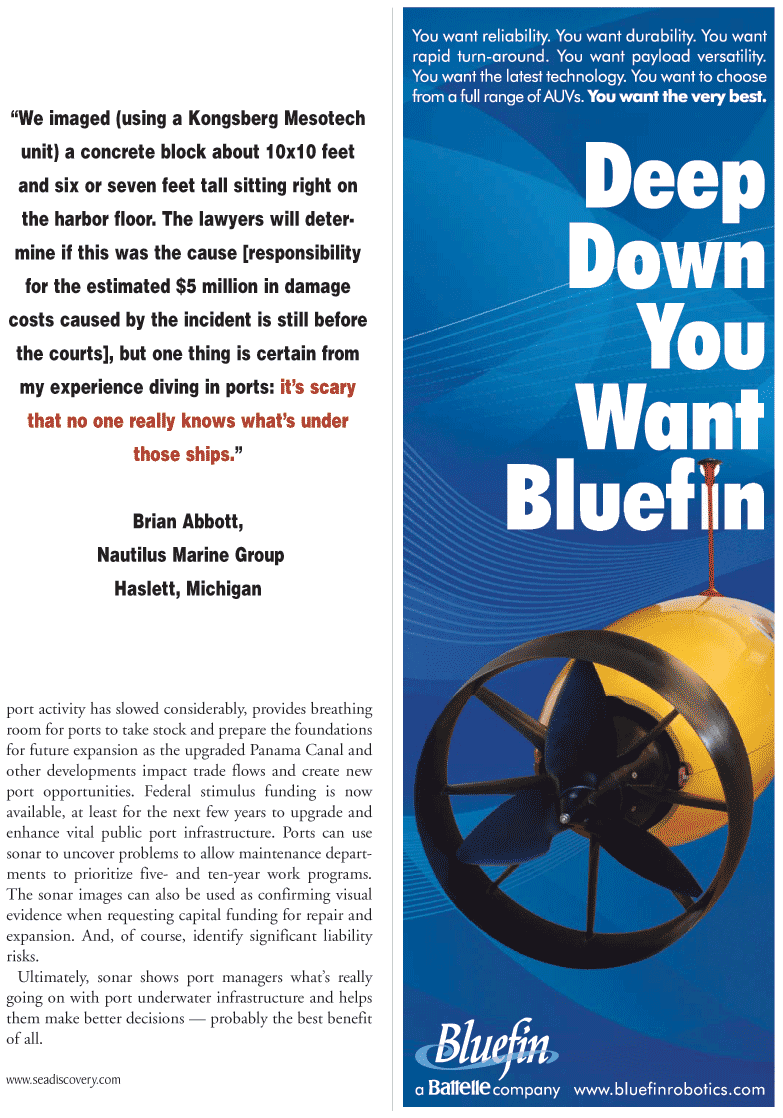
Page 25: of Marine Technology Magazine (September 2010)
Ocean Observation
Read this page in Pdf, Flash or Html5 edition of September 2010 Marine Technology Magazine
www.seadiscovery.com port activity has slowed considerably, provides breathing room for ports to take stock and prepare the foundations for future expansion as the upgraded Panama Canal and other developments impact trade flows and create new port opportunities. Federal stimulus funding is now available, at least for the next few years to upgrade and enhance vital public port infrastructure. Ports can use sonar to uncover problems to allow maintenance depart- ments to prioritize five- and ten-year work programs.
The sonar images can also be used as confirming visual evidence when requesting capital funding for repair and expansion. And, of course, identify significant liability risks.
Ultimately, sonar shows port managers what’s really going on with port underwater infrastructure and helps them make better decisions — probably the best benefit of all. “We imaged (using a Kongsberg Mesotech unit) a concrete block about 10x10 feet and six or seven feet tall sitting right on the harbor floor. The lawyers will deter- mine if this was the cause [responsibility for the estimated $5 million in damage costs caused by the incident is still before the courts], but one thing is certain from my experience diving in ports: it’s scary that no one really knows what’s under those ships.”
Brian Abbott,
Nautilus Marine Group
Haslett, Michigan

 24
24

 26
26
